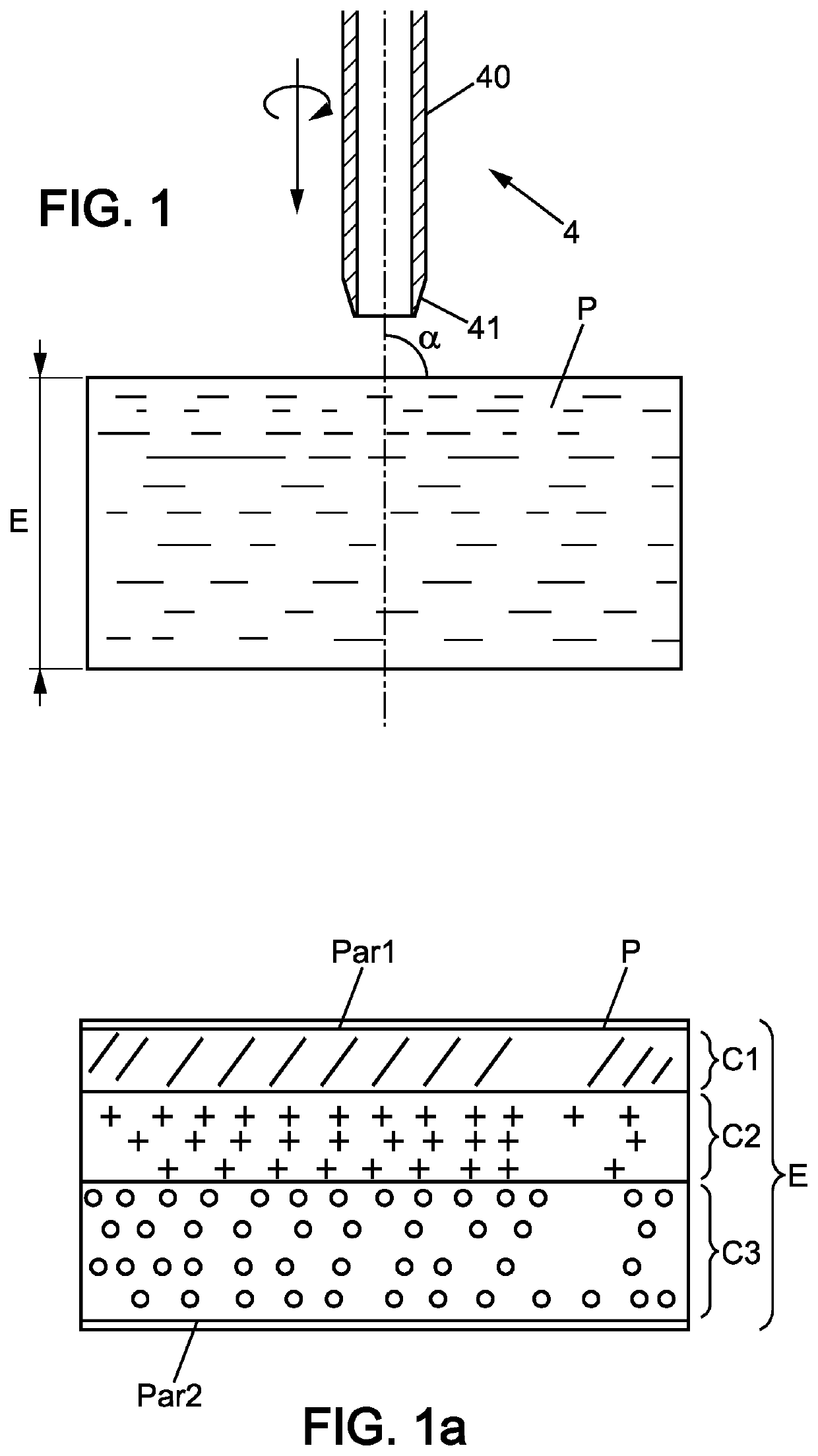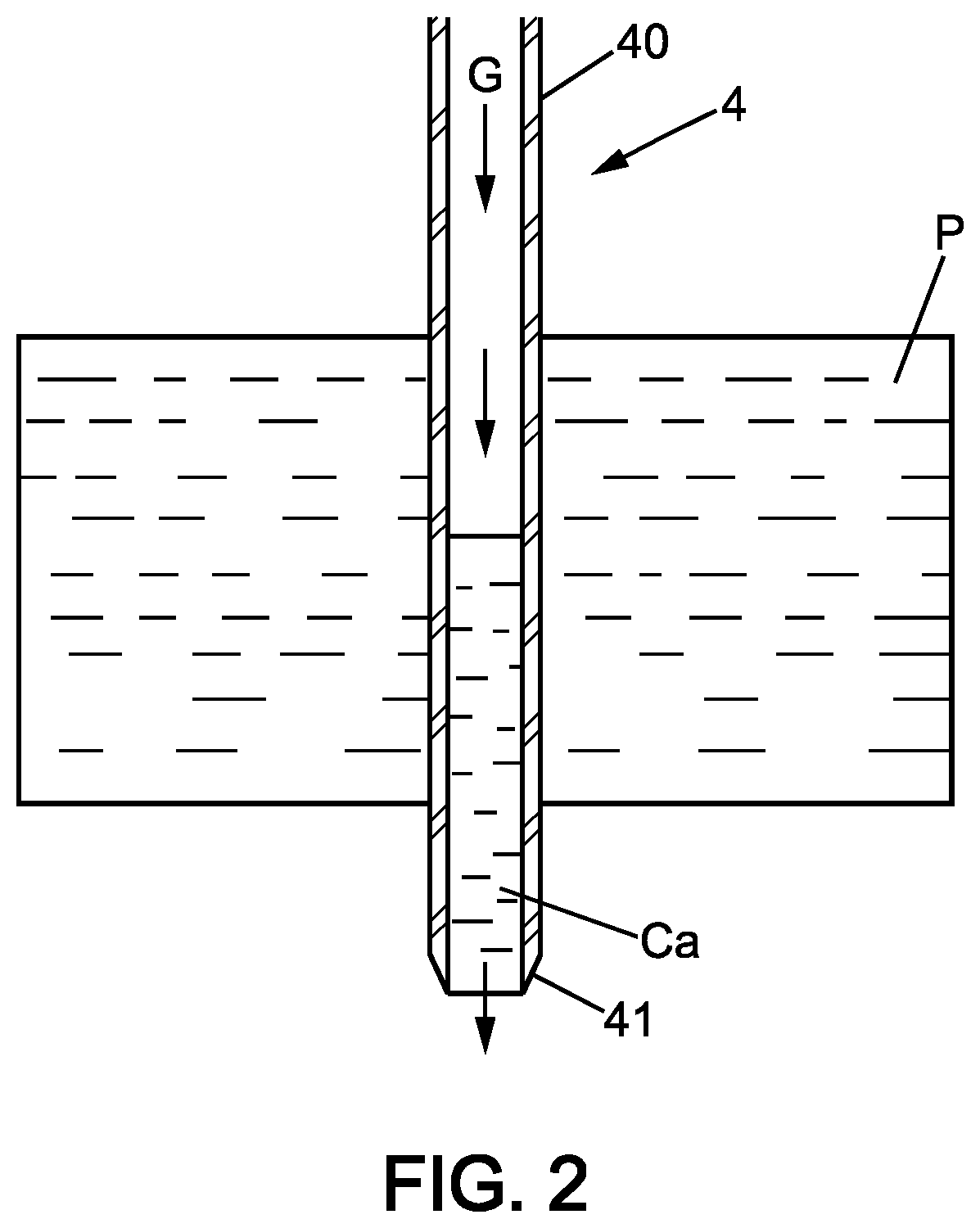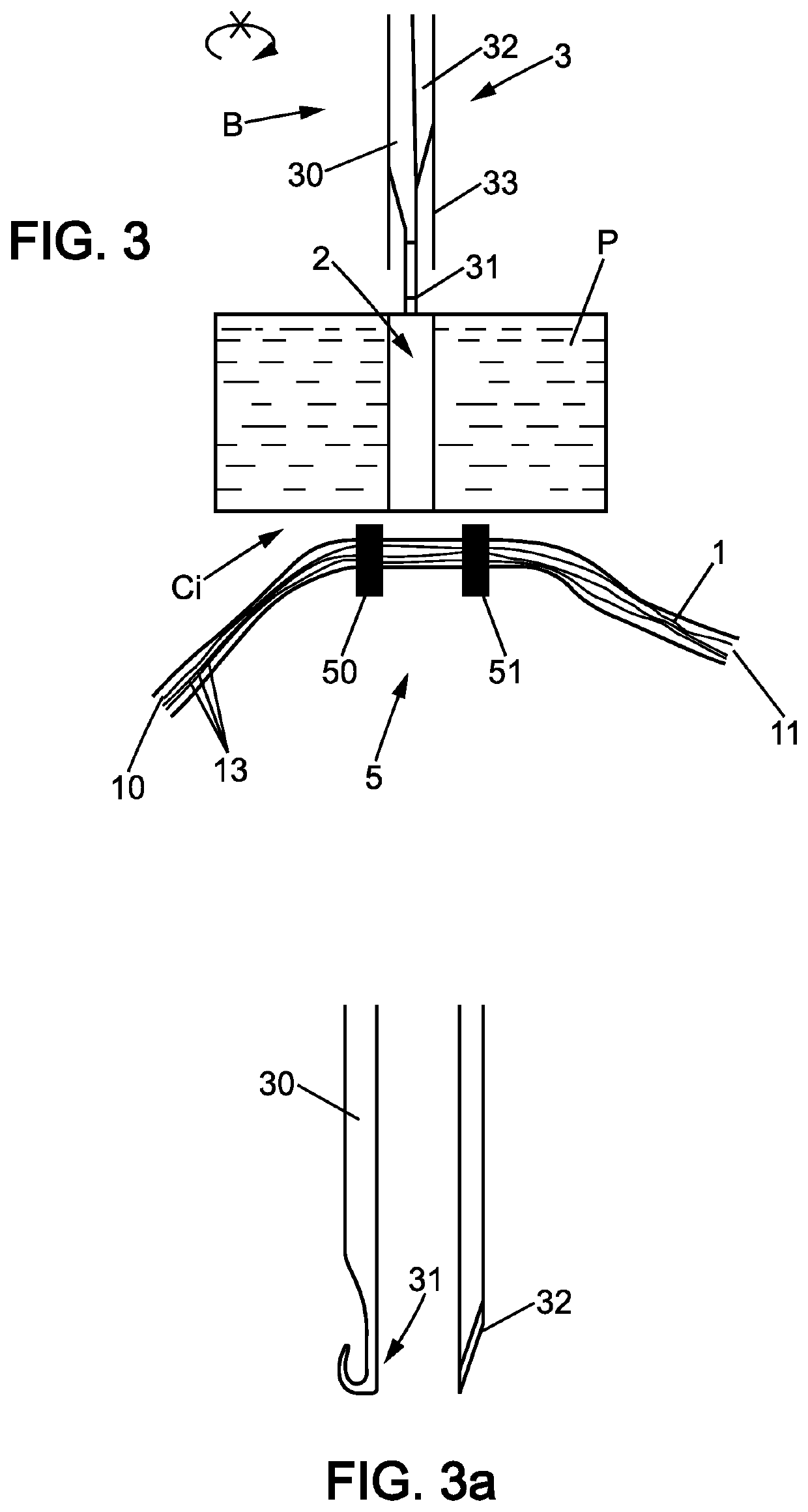Method for reinforcing a panel and a method for manufacturing a composite panel implementing such a method
a technology of reinforcing a panel and a manufacturing method, which is applied in the field of reinforcing a panel and manufacturing a composite panel, to achieve the effects of minimizing internal tension, reducing surface density, and minimizing internal stresses
- Summary
- Abstract
- Description
- Claims
- Application Information
AI Technical Summary
Benefits of technology
Problems solved by technology
Method used
Image
Examples
examples
[0192]Three examples of composite panels are detailed below with three different materials for the panel.
[0193]These three examples, however, have the following common features:[0194]They are obtained by the vacuum infusion molding technique, with a vacuum of the order of 0.9 bar below atmospheric pressure and the use of an epoxy resin,[0195]The two skins are made of a 0 / 90° bidirectional woven roving glass sheet,[0196]the core material—the panel—is in a closed cell foam of thickness E equal to 50 mm,[0197]the yarns of the reinforcing elements are made of glass fibers, each thread has a count of 300 Tex.
[0198]Example 1 Acrylic core material (PMI) reinforced by the method presented according to different coring diameters and the bores of which were lined according to different filling rates.
TABLE 2ReinforcementReinforcementbridge no1bridge no2ØNbFiberFiberDiameterFiber contentExtLineofØcontentØcontentAvgStandardAvgStandardAvg(mm)Noyarns(mm)(% m)(mm)(% m)(mm)deviation(% m)deviation(% ...
PUM
| Property | Measurement | Unit |
|---|---|---|
| internal diameter | aaaaa | aaaaa |
| internal diameter | aaaaa | aaaaa |
| internal diameter | aaaaa | aaaaa |
Abstract
Description
Claims
Application Information
 Login to View More
Login to View More - R&D
- Intellectual Property
- Life Sciences
- Materials
- Tech Scout
- Unparalleled Data Quality
- Higher Quality Content
- 60% Fewer Hallucinations
Browse by: Latest US Patents, China's latest patents, Technical Efficacy Thesaurus, Application Domain, Technology Topic, Popular Technical Reports.
© 2025 PatSnap. All rights reserved.Legal|Privacy policy|Modern Slavery Act Transparency Statement|Sitemap|About US| Contact US: help@patsnap.com



